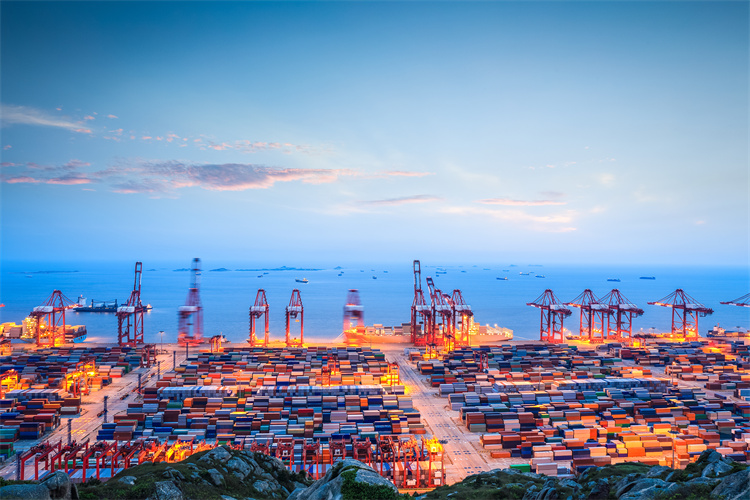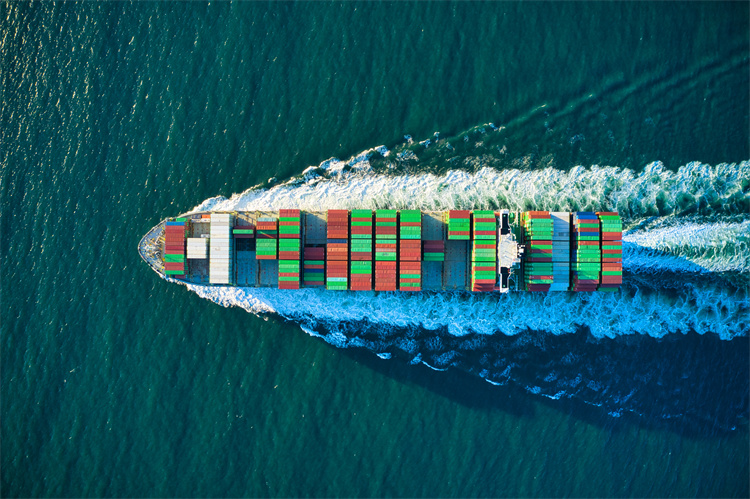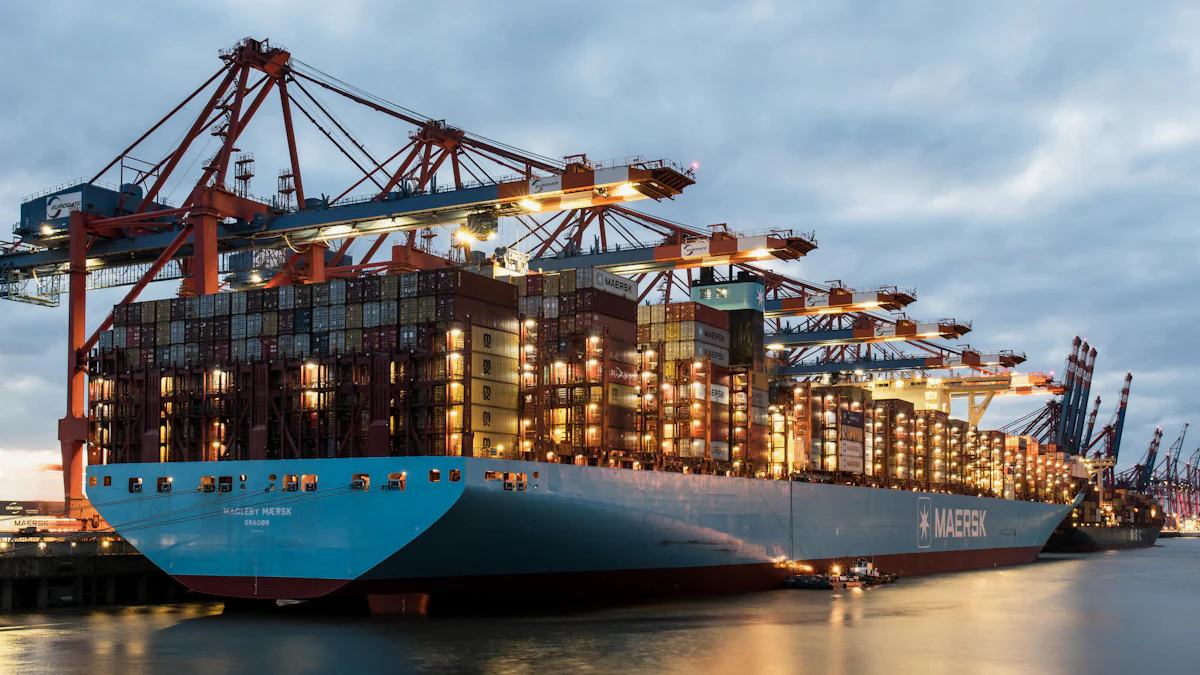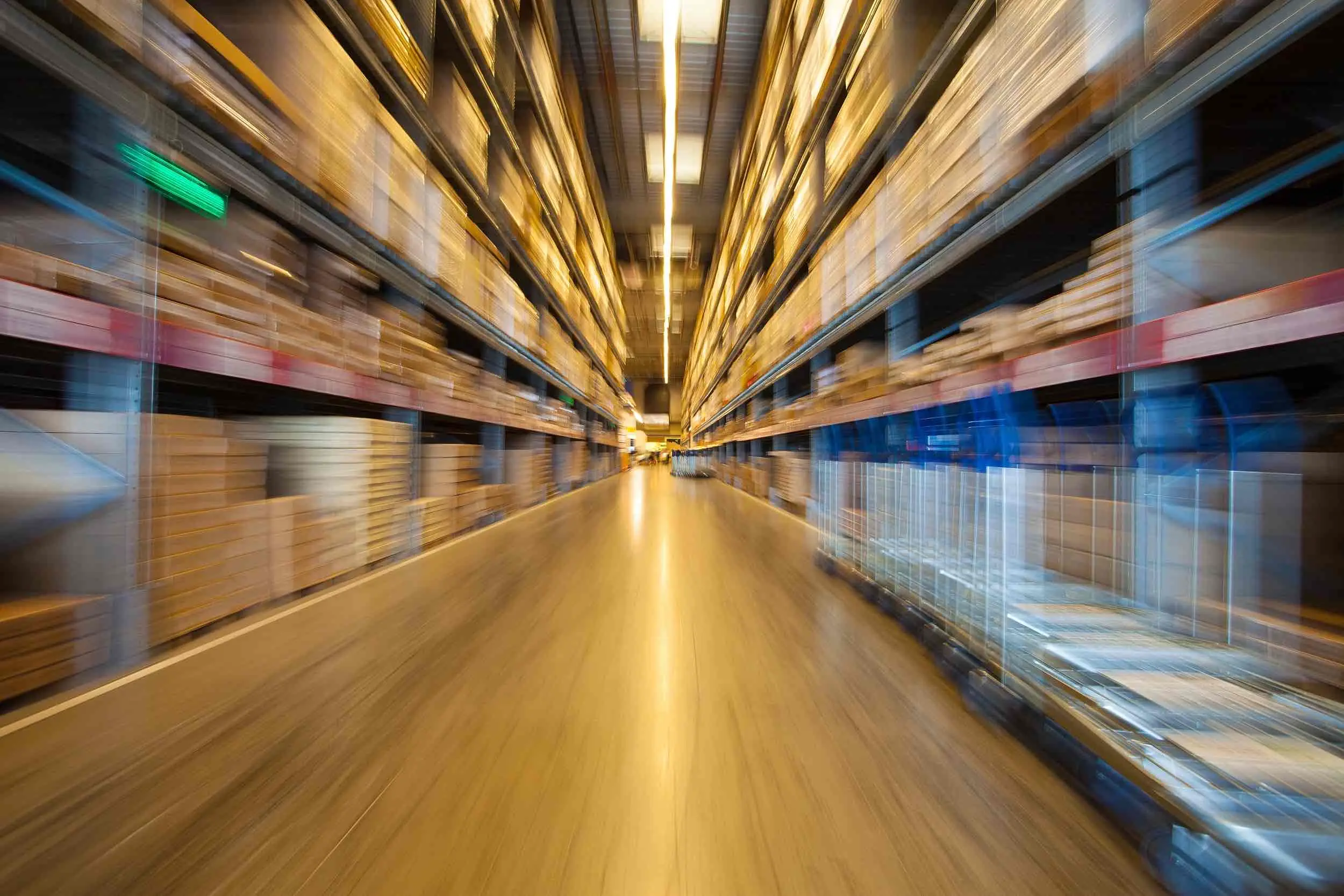Advancing Green Initiatives in Ocean Freight by 2025

Sustainability in ocean freight has become a pressing concern as the industry accounts for approximately 3% of global emissions. The urgency to address this challenge grows with the 2025 goal of reducing carbon intensity by 5% from 2020 levels. You play a vital role in driving change by embracing innovation and collaboration. Solutions like digitalization, which can cut emissions by 20%, and renewable energy-powered ships are paving the way. By adopting actionable strategies, you contribute to a greener future while meeting the demands of the evolving ocean freight forecast 2025.
Ocean Freight Forecast 2025: Challenges and Opportunities
The Environmental Impact of Ocean Freight
Ocean freight plays a critical role in global trade, but its environmental impact cannot be ignored. Ships contribute approximately 3% of global greenhouse gas emissions, making the industry a significant contributor to climate change. The reliance on heavy fuel oil, a carbon-intensive energy source, exacerbates this issue. You can expect the ocean freight forecast 2025 to emphasize reducing emissions through innovative solutions. For example, slow steaming, which involves reducing ship speeds, has proven effective in cutting fuel consumption and lowering CO2 emissions. According to a report by CE Delft, this practice not only reduces emissions but also minimizes operational costs.
The adoption of alternative fuels, such as biofuels and hydrogen, is another promising trend. These fuels offer cleaner energy options, helping you align with global sustainability goals. However, transitioning to these fuels requires significant investment and technological readiness. As the industry moves forward, you will see a growing focus on balancing environmental responsibility with operational efficiency.
Regulatory Pressures Driving Decarbonisation
Regulations are shaping the future of ocean freight. Starting January 1, 2025, the FuelEU Maritime Regulation will mandate the use of low-carbon fuels for vessels operating in EU-related voyages. This regulation represents a pivotal step toward decarbonisation. You must prepare for stricter compliance requirements, as these rules aim to reduce the carbon intensity of shipping operations.
The International Maritime Organization (IMO) has also set ambitious targets to cut greenhouse gas emissions. By 2025, the IMO expects the industry to achieve a 5% reduction in carbon intensity compared to 2020 levels. These regulatory pressures encourage you to adopt sustainable practices, such as investing in energy-efficient ship designs and leveraging digital technologies for route optimization. Compliance not only helps you meet legal requirements but also positions your business as a leader in green logistics.
The Role of Sustainable Logistics in Meeting Global Targets
Sustainable logistics will play a vital role in achieving global decarbonisation targets. By adopting green logistics practices, you can reduce emissions and enhance operational efficiency. A report by Carbon Trust highlights that the logistics industry could cut greenhouse gas emissions by 20% by 2030 through sustainable transportation methods. This underscores the importance of integrating eco-friendly solutions into your operations.
Digitalization is a key enabler of sustainable logistics. Technologies like AI-driven route optimization and IoT applications improve fuel efficiency and reduce unnecessary emissions. These advancements align with emerging shipping trends for 2025, which prioritize flexibility and efficiency. Additionally, green logistics practices influence consumer behavior, encouraging the purchase of goods produced through environmentally responsible processes. By embracing these practices, you contribute to a greener supply chain while meeting the demands of the evolving ocean freight forecast 2025.
Innovative Green Logistics Solutions in Ocean Freight

Alternative Fuels for Decarbonisation
These fuels provide varying levels of emission reductions, contributing to a sustainable maritime future. Hydrogen, for instance, offers zero carbon emissions when produced through renewable energy sources. Methanol and ammonia are gaining traction due to their potential to significantly lower greenhouse gas emissions. By investing in these alternatives, you can align your operations with global decarbonization goals.
Other promising options include biofuels, hydrogen, methanol, and ammonia. These fuels provide varying levels of emission reductions, contributing to a sustainable maritime future. Hydrogen, for instance, offers zero carbon emissions when produced through renewable energy sources. Methanol and ammonia are gaining traction due to their potential to significantly lower greenhouse gas emissions. By investing in these alternatives, you can align your operations with global decarbonization goals.
LNG, Biofuels, and Emerging Hydrogen Solutions
LNG serves as a transitional fuel, bridging the gap between traditional marine fuels and zero-emission alternatives. Its cleaner combustion process makes it an attractive option for reducing your environmental footprint. Biofuels, derived from organic materials, offer another pathway to sustainability. They can be used in existing engines with minimal modifications, providing a cost-effective solution.
Hydrogen represents the future of green shipping. It offers immense potential for achieving zero emissions, especially when paired with fuel cell technology. However, its adoption requires advancements in storage and distribution infrastructure. Methanol and ammonia are also emerging as key players in the alternative fuel landscape. These fuels are paving the way for a cleaner and more sustainable maritime industry.
Energy-Efficient Ship Designs and Technologies
Energy-efficient ship designs are revolutionizing ocean freight. Modern vessels incorporate innovative technologies to minimize fuel consumption and emissions. Wind-assisted propulsion systems, for example, use sails or rotor sails to harness wind energy. This reduces reliance on conventional fuels, cutting operational costs and emissions.
Solar integration is another game-changer. Solar panels installed on ships generate renewable energy, powering onboard systems and reducing fuel usage. These technologies not only enhance efficiency but also demonstrate your commitment to green shipping practices. By adopting energy-efficient designs, you can stay ahead in the competitive maritime sector.
Wind-Assisted Propulsion and Solar Integration
Wind-assisted propulsion is making a comeback in modern shipping. Rotor sails and wing sails capture wind energy, providing additional thrust to vessels. This reduces fuel consumption and lowers greenhouse gas emissions. According to industry reports, wind-assisted technologies can cut fuel use by up to 20%.
Solar integration complements wind propulsion by generating clean energy. Solar panels installed on ship decks power auxiliary systems, reducing the load on main engines. This dual approach enhances energy efficiency and supports your sustainability goals. By combining these technologies, you can achieve significant environmental and economic benefits.
Digitalization and Smart Shipping for Green Logistics
Digitalization is driving the future of green shipping. Advanced technologies like artificial intelligence (AI) and the Internet of Things (IoT) optimize operations, reducing emissions and improving efficiency. AI-driven route optimization analyzes real-time data to identify the most fuel-efficient paths. This minimizes unnecessary fuel consumption and shortens transit times.
IoT applications enhance visibility and control over shipping operations. Sensors and connected devices monitor fuel usage, engine performance, and environmental conditions. This data enables you to make informed decisions, ensuring compliance with sustainability standards. Digitalization not only streamlines operations but also positions you as a leader in green logistics.
AI-Driven Route Optimization and IoT Applications
AI-driven route optimization transforms how you plan and execute shipping routes. By analyzing weather patterns, traffic conditions, and fuel consumption, AI identifies the most efficient paths. This reduces travel distances and fuel usage, cutting emissions by up to 20%. IoT applications further enhance this process by providing real-time updates on vessel performance.
Connected devices monitor key metrics, enabling predictive maintenance and reducing downtime. IoT also supports transparency, allowing you to track shipments and ensure timely deliveries. These technologies are essential for achieving your green shipping objectives. By embracing digitalization, you can enhance efficiency and contribute to a sustainable future.
JUSDA's Role in Advancing Sustainable Logistics
Leveraging 中欧班列 for Eco-Friendly Freight Solutions
The China-Europe Express Rail Service (中欧班列) offers a transformative solution for reducing the environmental impact of long-distance freight. This rail service bridges the gap between speed and cost, providing a sustainable alternative to traditional sea and air freight. By choosing this option, you can achieve faster delivery times compared to ocean shipping while significantly lowering carbon emissions. For instance, rail transport emits up to 90% less CO2 than air freight, making it an ideal choice for businesses aiming to meet their sustainability goals.
Its ability to handle diverse cargo ensures that your supply chain remains efficient and adaptable. Additionally, JUSDA’s expertise in intercontinental logistics guarantees smooth customs operations and minimizes delays.
JUSDA's JusLink Intelligent Supply Chain for Green Logistics
JUSDA’s JusLink Intelligent Supply Chain platform revolutionizes how you manage logistics by integrating cutting-edge technologies like IoT, cloud computing, and big data. This platform enables real-time collaboration and transparency across the supply chain, helping you optimize operations and reduce emissions. For example, AI-driven demand forecasting ensures accurate inventory management, minimizing waste and unnecessary transportation.
By using JusLink, you gain access to tools that streamline shipping, warehousing, and customs processes.
Industry-Specific Solutions for Decarbonisation
JUSDA tailors its solutions to meet the unique needs of various industries, ensuring that you can adopt sustainable practices without compromising efficiency. For the automotive sector, JUSDA offers optimized supply chain strategies that reduce emissions during the transportation of heavy equipment and parts. In the electronics industry, the focus shifts to consolidating shipments and using energy-efficient warehousing solutions.
The China-Europe Express Rail Service plays a pivotal role in these industry-specific strategies. For example, a multinational manufacturer reduced its carbon footprint by 30% by transitioning to rail transport for long-distance shipments. Similarly, JUSDA’s collaboration with a leading retail giant resulted in a 20% reduction in emissions through optimized delivery routes and fleet management. These examples highlight how tailored solutions can drive meaningful progress in decarbonization efforts.
By adopting JUSDA’s industry-specific strategies, you can align your operations with global sustainability goals. These solutions not only help you reduce emissions but also improve cost efficiency and customer satisfaction. JUSDA’s commitment to innovation and collaboration ensures that you stay ahead in the evolving landscape of sustainable logistics.
Collaboration as a Catalyst for Green Logistics
Partnerships Between Logistics Providers and Technology Innovators
Collaboration between logistics providers and technology innovators drives progress in green logistics. By working together, you can integrate advanced technologies into your operations to reduce emissions and improve efficiency. For instance, partnerships with AI developers enable the creation of tools for route optimization, which minimizes fuel consumption. Similarly, collaborating with IoT specialists allows you to monitor real-time data on fuel usage and engine performance, ensuring sustainable practices.
Industry Experts highlight that nearly 50% of organizational leaders actively promote sustainable practices and provide resources for green logistics technologies. This strong endorsement underscores the importance of partnerships in achieving sustainability goals.
These collaborations also foster innovation. Technology innovators bring expertise in renewable energy solutions, such as solar and wind-assisted propulsion systems. Logistics providers, on the other hand, contribute operational insights, ensuring that these technologies are practical and scalable. By forming strategic alliances, you can stay ahead in the competitive landscape while advancing your sustainability objectives.
Industry Alliances for Shared Sustainability Goals
Industry alliances play a crucial role in promoting green logistics. By joining forces with other stakeholders, you can share resources, knowledge, and best practices to achieve common sustainability goals. These alliances often focus on developing industry-wide standards for reducing emissions and adopting eco-friendly technologies.
According to Industry Experts, 39.53% of stakeholders strongly believe that sustainable logistics practices can make a positive environmental difference. This shared belief forms the foundation for successful industry alliances.
Such collaborations also enhance your ability to influence policy changes. By presenting a united front, industry alliances can advocate for regulations that support green logistics. Additionally, these partnerships create opportunities for joint investments in research and development, accelerating the adoption of innovative solutions. Participating in these alliances not only strengthens your commitment to sustainability but also positions you as a leader in the field.
Government and Regulatory Collaboration for Decarbonisation
Government and regulatory bodies play a pivotal role in driving decarbonization efforts. Collaborating with these entities ensures that your operations align with environmental standards and benefit from supportive policies. For example, the FuelEU Maritime Regulation, effective January 1, 2025, mandates the use of low-carbon fuels for EU-related voyages. By working closely with regulators, you can prepare for such requirements and avoid compliance challenges.
Industry Experts note that the analysis of government regulations reveals varied perspectives on the clarity and enforcement of frameworks related to green logistics technologies. Engaging with regulators helps address these concerns and fosters a supportive environment for sustainable practices.
Government collaboration also opens doors to funding opportunities. Many governments offer grants and incentives for adopting green technologies, reducing the financial burden of initial investments. By leveraging these resources, you can accelerate your transition to sustainable logistics. This partnership not only benefits your business but also contributes to global decarbonization efforts.
Actionable Strategies for Achieving Sustainability Goals by 2025
Investing in Green Technologies and Infrastructure
Investing in green technologies and infrastructure is essential for achieving sustainability goals. You can adopt advanced solutions like renewable energy systems, energy-efficient machinery, and low-emission vehicles to reduce your environmental impact. For example, integrating solar panels into warehouses or using electric forklifts can significantly cut energy consumption. These investments not only lower emissions but also improve operational efficiency.
A growing number of logistics companies are prioritizing green initiatives. According to a recent survey, 60% of logistics companies have already started investing in material handling green initiatives. This trend highlights the importance of adopting sustainable practices to stay competitive. By upgrading your infrastructure, you can align with global decarbonization efforts and position your business as a leader in green logistics.
Additionally, focusing on green technologies helps you meet consumer expectations. Research shows that 66% of respondents consider sustainability when making a purchase. This means your commitment to eco-friendly practices can enhance customer loyalty and brand reputation. By investing in these technologies, you contribute to a cleaner environment while meeting the demands of a climate-conscious market.
Aligning Operations with International Sustainability Regulations
Aligning your operations with international sustainability regulations ensures compliance and supports global efforts to combat climate change. Regulatory frameworks like the FuelEU Maritime Regulation and the International Maritime Organization's targets for reducing carbon intensity require you to adopt sustainable practices. These regulations aim to achieve net-zero emissions in the long term, making it crucial for you to act now.
You can start by conducting audits to identify areas where your operations fall short of compliance. Implementing energy-efficient technologies, optimizing routes, and transitioning to alternative fuels are practical steps to meet these standards. For instance, using biofuels or hydrogen-powered vehicles can help you reduce emissions while adhering to regulatory requirements.
Staying ahead of regulations also provides a competitive advantage. Businesses that proactively align with sustainability standards often gain access to incentives, grants, and partnerships that support green initiatives. By complying with these regulations, you not only avoid penalties but also contribute to a global movement toward climate resilience and net-zero goals.
Educating and Empowering the Workforce on Green Practices
Educating and empowering your workforce is a critical step in achieving sustainability goals. Employees play a vital role in implementing green practices, so providing them with the necessary knowledge and tools is essential. Training programs focused on energy conservation, waste reduction, and sustainable transportation can help your team adopt eco-friendly habits.
You can also encourage employee participation in green initiatives by creating incentive programs. Recognizing and rewarding efforts to reduce emissions or improve efficiency motivates your workforce to stay committed to sustainability. For example, offering bonuses for innovative ideas that lower carbon footprints fosters a culture of environmental responsibility.
Empowering your workforce goes beyond training. Providing access to advanced tools and technologies enables employees to make informed decisions that align with sustainability goals. When your team understands the importance of green practices, they become active contributors to your decarbonization efforts. This collective action strengthens your organization's ability to meet climate targets and achieve net-zero emissions.
Measuring Progress and Accountability in Green Logistics
Setting Clear Metrics and Benchmarks for Decarbonisation
You cannot improve what you do not measure. Establishing clear metrics and benchmarks is essential for tracking progress in reducing carbon emissions. Start by conducting a comprehensive inventory of your greenhouse gas emissions. This step helps you identify the most significant sources of emissions in your operations. Many businesses have already adopted this practice, enabling them to set realistic and science-based targets for decarbonization.
Define specific benchmarks that align with global sustainability goals. For example, you can aim to reduce carbon emissions by a certain percentage annually or transition a portion of your fleet to eco-friendly transportation modes like electric or hybrid vehicles. Companies such as Maersk and Danone have successfully integrated science-based targets into their logistics strategies, focusing on alternative fuels and supply chain optimization. These benchmarks not only guide your efforts but also demonstrate your commitment to sustainability.
Tracking progress requires consistent monitoring. Use tools like AI-powered carbon emission trackers to measure your performance against these benchmarks. These technologies provide real-time insights, helping you make data-driven decisions to stay on course. By setting clear metrics and benchmarks, you create a roadmap for achieving your green logistics objectives.
Communicating Sustainability Achievements to Stakeholders
Effective communication of your sustainability achievements is crucial for building credibility and fostering collaboration. Share your progress with stakeholders, including customers, partners, and regulatory bodies. Highlight specific actions you have taken, such as adopting eco-friendly transportation modes or reducing carbon emissions through optimized delivery routes.
Use multiple channels to reach your audience. Publish sustainability reports, create engaging social media content, and host webinars to showcase your efforts. For example, companies that transitioned to rail transport have successfully communicated their environmental benefits, inspiring others to follow suit. These stories resonate with stakeholders and encourage collective action toward decarbonization.
Transparency in communication also involves acknowledging challenges. Share the obstacles you face and the steps you are taking to overcome them. This honesty strengthens your relationship with stakeholders and demonstrates your dedication to continuous improvement. By effectively communicating your achievements, you inspire confidence and drive further progress in green logistics.
The Future of Sustainable Logistics Beyond 2025

Emerging Trends and Innovations in Green Logistics
The logistics industry continues to evolve, with emerging trends and innovations shaping its future. You will see a stronger focus on integrating renewable energy into logistics operations. Solar-powered warehouses and electric vehicles are becoming more common, reducing reliance on fossil fuels. These advancements not only lower emissions but also improve energy efficiency.
Technological readiness plays a critical role in implementing green logistics. AI and machine learning are transforming supply chain management. These technologies help you predict demand, optimize routes, and reduce waste. For example, AI-driven systems can analyze real-time data to identify the most efficient transportation methods, cutting fuel consumption significantly.
Another trend is the rise of circular logistics. This approach emphasizes reusing materials and minimizing waste. By adopting circular logistics, you can reduce environmental impact while creating cost-saving opportunities. Innovations like biodegradable packaging and reverse logistics systems support this shift, ensuring a sustainable supply chain.
Long-Term Impacts of Current Decarbonization Efforts
The decarbonization efforts you adopt today will have lasting effects on the logistics industry. Reducing emissions now sets the foundation for a cleaner and more sustainable future. By transitioning to renewable energy sources, you contribute to a significant decrease in greenhouse gas emissions over time.
Optimizing energy use also enhances logistics performance. Energy-efficient technologies, such as electric trucks and smart shipping systems, reduce operational costs while promoting sustainability. These advancements ensure that your business remains competitive in an increasingly eco-conscious market.
Long-term impacts extend beyond environmental benefits. Companies that prioritize green logistics often experience improved brand reputation and customer loyalty. Consumers value businesses that demonstrate a commitment to sustainability. By investing in decarbonization, you position your organization as a leader in the industry and inspire others to follow suit.
The Role of Consumer Demand in Shaping Sustainable Practices
Consumer demand plays a pivotal role in driving sustainable practices. Modern consumers are more environmentally conscious than ever. They prefer products and services that align with their values. This shift in preferences encourages you to adopt green logistics solutions to meet market expectations.
Research shows that consumers actively seek out brands that prioritize sustainability. By reducing emissions and utilizing renewable resources, you appeal to this growing demographic. Offering eco-friendly options, such as carbon-neutral shipping, enhances your competitive edge and builds trust with your audience.
Transparency is key to meeting consumer expectations. Sharing your sustainability achievements, such as emission reductions or renewable energy adoption, fosters trust and loyalty. Highlighting these efforts through reports or social media platforms demonstrates your commitment to a greener future. By aligning your practices with consumer demand, you not only contribute to environmental preservation but also strengthen your market position.

JUSDA Solutions
To provide you with professional solutions and quotations.
The journey toward a greener maritime future demands addressing challenges like shipping emissions and adopting innovative solutions such as green transportation. By embracing sustainable supply chain practices, you contribute to reducing environmental impact while enhancing operational efficiency. Collective efforts, including partnerships and systemic changes, drive innovation and foster eco-friendly advancements. The shipping industry trends highlight the importance of collaboration and alternative fuels in achieving sustainability goals. JUSDA remains committed to advancing green maritime initiatives, ensuring a future where environmental, economic, and social benefits align seamlessly.
See Also
Discovering Innovations in Sea Freight Logistics for 2024
JUSDA's Logistics Expansion: A Focus on Sustainable Practices
Transforming Supply Chain Sustainability Through JUSDA's Innovations
